Heavyweight Pictures: Neil Leifer Reflects on 60 Years of Iconic Photos Inside the Boxing Ring
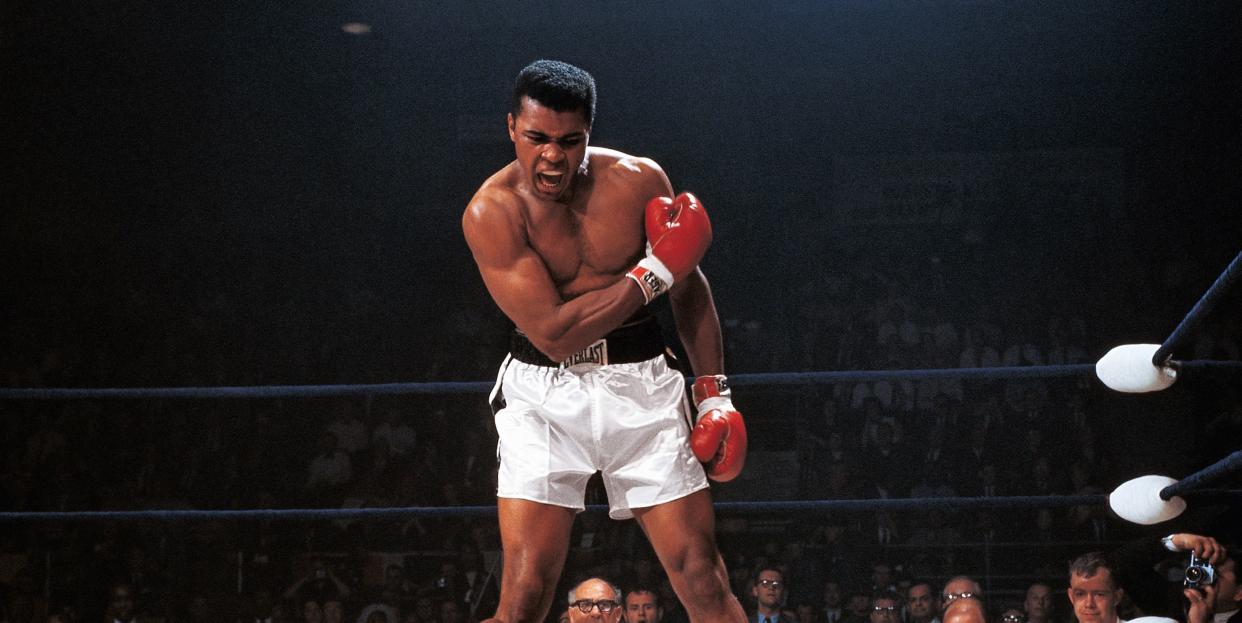
- Oops!Something went wrong.Please try again later.
The Thrilla in Manila. Rope-a-Dope in Zaire. Roberto Duran’s “No mas” moment. Mike Tyson’s “lend me your ear” disqualification. “Marvelous” Marvin Hagler’s ferocious three-round war with Thomas “The Hitman” Hearns. If it happened in the boxing ring during your lifetime, it’s a safe bet that legendary photographer Neil Leifer was not only ringside but took a remarkable picture of it. In fact, Leifer’s legacy as a boxing photographer is so untouchable that when Sports Illustrated selected the 100 greatest sports photos of all time, Leifer claimed two spots in the top 10, including number one.
To say that Leifer has a new book out would be a significant understatement. With only 1,000 copies printed, each numbered and signed, and costing $1,000 a pop, Neil Leifer. Boxing. (Taschen) is less coffee-table totem, more objet d’art. Weighing in at 19 pounds, the book opens to a massive 28 inches across by 15 inches high, allowing readers to feel its 455 photographs—the head-snapping uppercuts, the unexplainable fury, the realization that defeat is imminent—as much as see them.
Here, Leifer shares his photographic memories of six stunning images from the last half century.
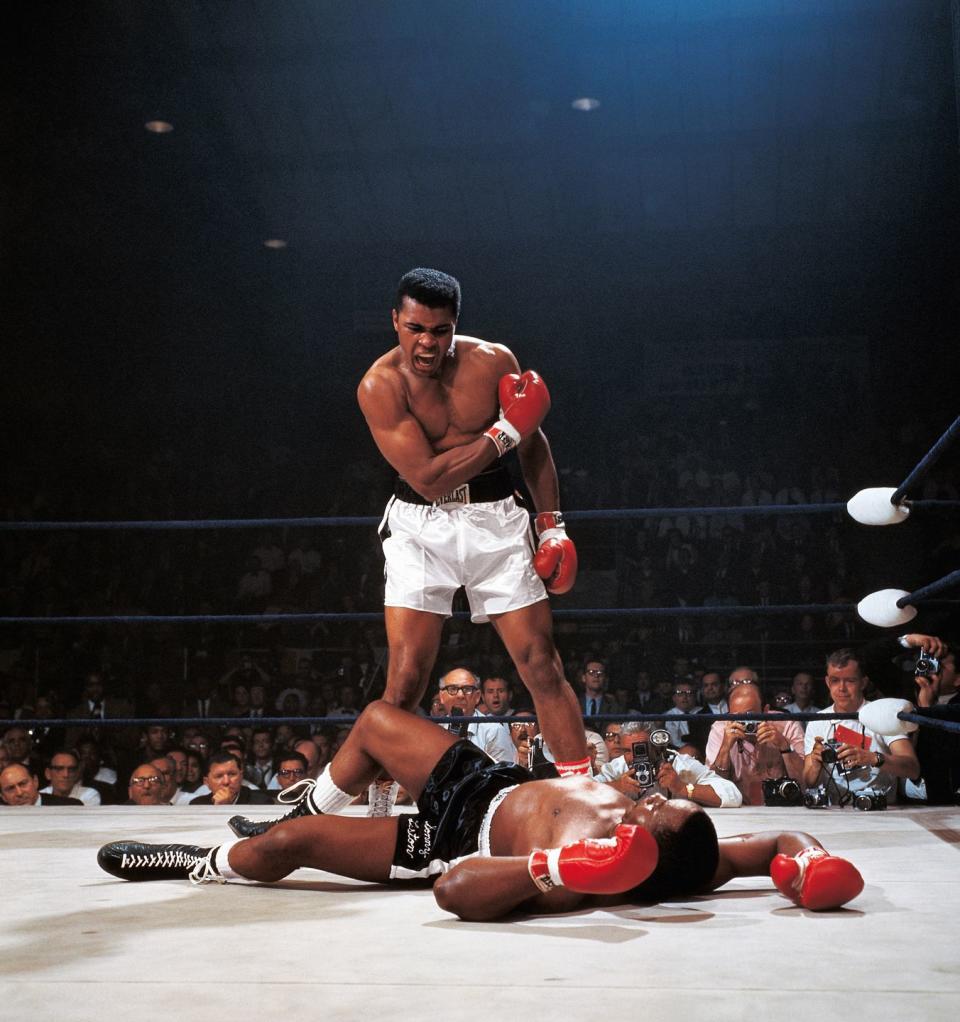
THE PUNCH: Ali vs. Liston May 25, 1965
When Leifer handed his editors at Sports Illustrated what is now considered to be the single most iconic sports photo of all time, they weren’t jumping up and down. “Nobody thought it was a great picture in ’65,” Leifer says. “It wasn’t considered good enough for the cover that week, or even the lead page of the story. I was pissed off because that picture was the story of the fight.” The photo was submitted for awards that year, but didn’t garner even an honorable mention. So how did this image go from overlooked to iconic? “As the years went by and Ali’s fame grew,” Leifer explains, “this is the way people began to want to remember him—as this young, handsome, charismatic, fabulous-looking fighter. As he became an American icon, and deservedly so, it became the image that fit their impression, and the picture took on a life of its own.”
Beyond Ali’s icon status, there’s plenty about the image itself that makes it so compelling: the snarling thrill of victory and flat-out agony of defeat; Ali’s taut, electrified muscles compared to Sonny Liston lying limp, exposed, overwhelmed; the cinematic qualities of the colors and the light. “I used a Rollei, Ektachrome 64, and strobes. The same set-up you would have used in the studio to shoot an Esquire cover at the time,” Leifer says. About those strobes: It took three seconds for them to recharge, meaning Leifer only had one chance to make the picture. Liston went down at 1:44 in the first round; this is the only color photo of that moment.
It was a championship fight, and a rematch at that, so there were many enormously talented photographers with their cameras trained on the canvas that night—you can see some of them in the picture—but, says Leifer, they were in the wrong seats. “Luck is an important factor in sports photography,” he admits, “but if you’re a good photographer and you happen to be in the lucky seat, you don’t miss.”
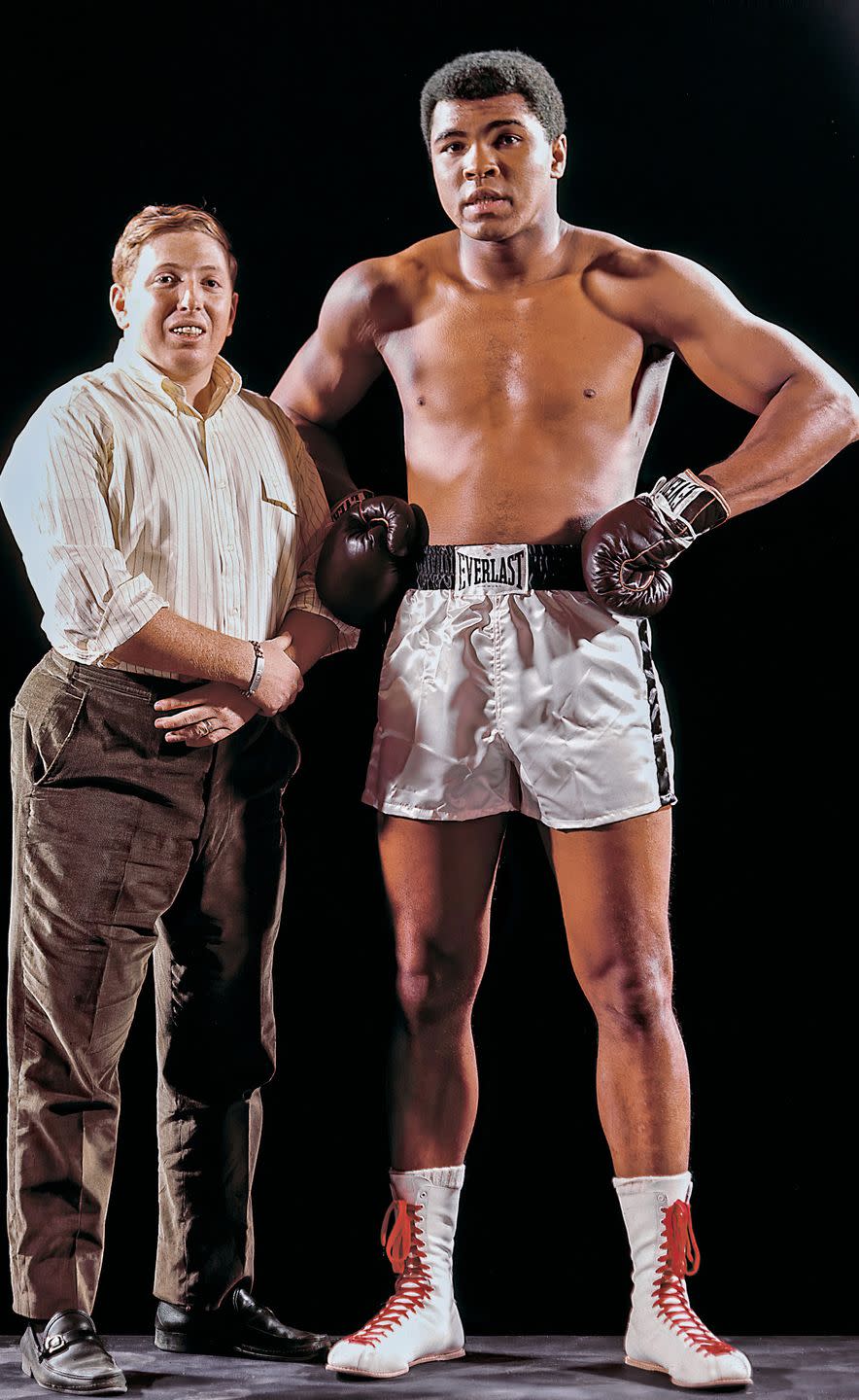
YOUNG NEIL: New York City, 1966
When this picture was taken in 1966, Leifer and Ali were both 24, and no one could have predicted that Leifer would go on to become boxing’s greatest photographer (and the only photographer ever to be inducted into the International Boxing Hall of Fame) or that Ali would go on to become, simply, The Greatest. Looking back, Leifer says, “It would be fair to say that my career would not have gone the way it did if I hadn’t been lucky enough to have Ali as my subject so often.”
Leifer covered 35 of Ali’s fights and probably as many one-on-one sessions away from the ring. This was the first of those—and because of that, it’s a special photo for Leifer. The shoot took place in the Midtown Manhattan studio that LIFE magazine and SI shared. After Leifer finished his shoot, he posed with The Champ—who, in his gloves and Everlast shorts, towered over the red-headed photographer—using the same black background and glorious lighting.
“Look, I grew up on the Lower East Side and I became a fight fan because my father and I watched the Friday Night Fights on television,” Leifer says. “When I was young, I had a job delivering sandwiches to the great photographers in the LIFE photo studio, never dreaming that not so many years later I’d be posing the heavyweight champion of the world in that very studio.” Over the course of his long and successful career, Leifer says, “I shot 40 covers for Time magazine, shot everyone from Charles Manson to the pope, but the thing people remember me for is my relationship with Ali.” The truth, says Leifer, is that “Ali made a hero of anyone he worked with. He always gave you something—and your boss alwaysthought you were brilliant. If you missed with Ali, you weren’t very good.”
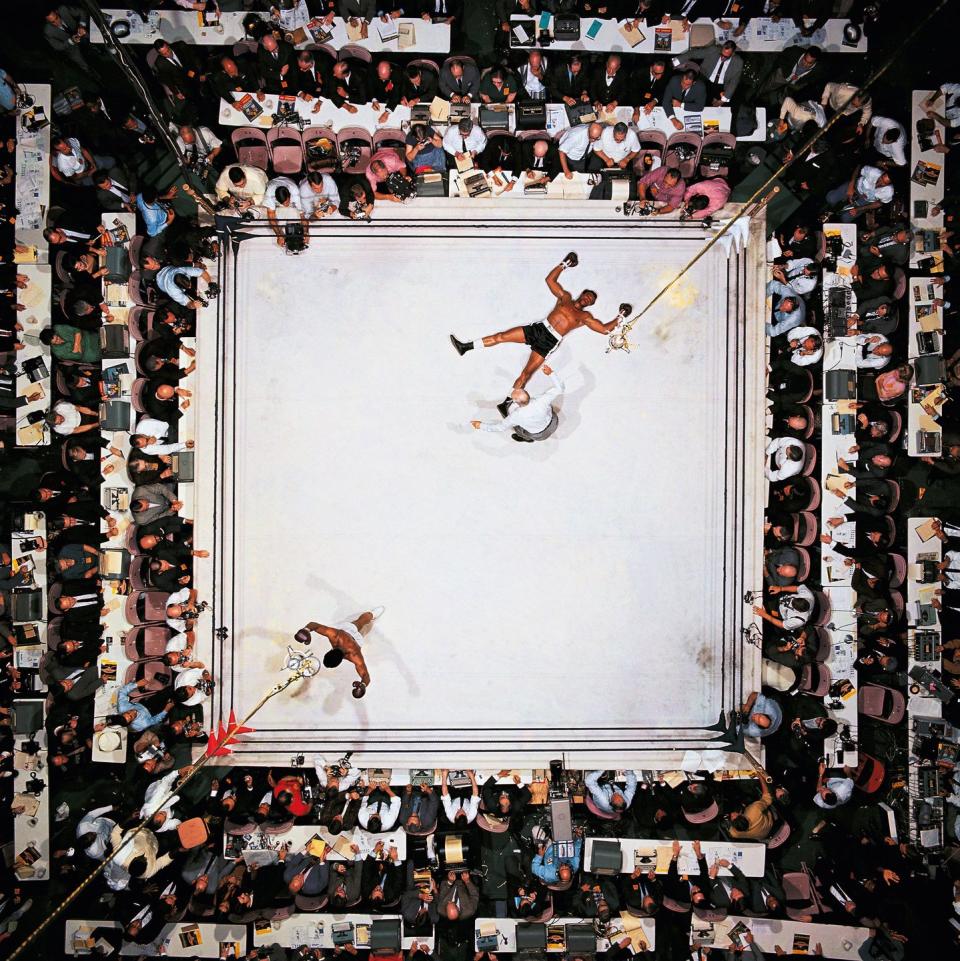
FLAT OUT: Ali vs. Williams, November 14, 1966
In a way, this picture was four years in the making. In 1962, as construction began on the Astrodome in Houston, SI assigned Leifer to document its progress. (“They would be playing baseball indoors,” says Leifer. “No one could imagine it!”) Leifer made four trips to the site; he shot the digging of the hole, the early building phase, and opening day on April 9, 1965. “One of the things I remember seeing,” he says, “was that the lighting rig was very unusual. They could bring it up or down.” At most fights, the lights were 20 feet over the ring, so if you shot straight down you couldn’t get wide enough to capture the entire ring and press rows. But at the new Astrodome, Leifer says, “the lights would be 80 feet over the ring—high enough for me to mount my Hasselblad with a 50mm lens and strobe lights and do a shot from directly over the center of the ring. When I saw that, I thought this would a good picture no matter what. But if a fighter fell flat on his back, it would be great.”
And great it was. So great, in fact, that in 2012 Sports Illustrated named it the single greatest sports photo of all time. Not boxing photo; sports photo. A marvel of clarity and composition—the ring, the ropes, the rows of reporters, their hands all pointing inward. And the champ’s arms a perfect and unwitting reflection of his foe lying flat, vanquished on the canvas, like some kind of sad snow angel.
The shoot required a lot of prep work: “We sent a Ryder truck full of strobe lights and other equipment to Houston four or five days before the fight. I shot a test roll, so I knew before the fight started what the image would look like without the fighters.” The fight itself—in which hard-punching hometown favorite Cleveland “Big Cat” Williams challenged Ali for the heavyweight title—is considered one of Ali’s best. The Champ was lightning fast and devastating; he even debuted the Ali Shuffle.
Leifer used a remote to trigger the shot. “I only had 12 exposures from the camera,” he remembers. “I shot the fighters touching gloves, then two or three punching pictures. But I planned to hold the rest just for knockdowns, and that’s what I did.” Leifer, who was also shooting ringside, couldn’t look through the viewfinder to take the overhead shot; he snapped based on instinct. He nailed it. “Had Williams fallen a foot to the right,” Leifer says, “or had Ali gone half a step forward, they would have been covered by the hanging microphones.”
Half a century later, Leifer’s Manhattan living room is crowded with the work of other photographers, some of the most celebrated names to ever look through a lens. “This is the only picture of mine that hangs in that room,” he says. “It’s my favorite, without question, because unlike the Lewiston picture when I got lucky, this came from my brain.”
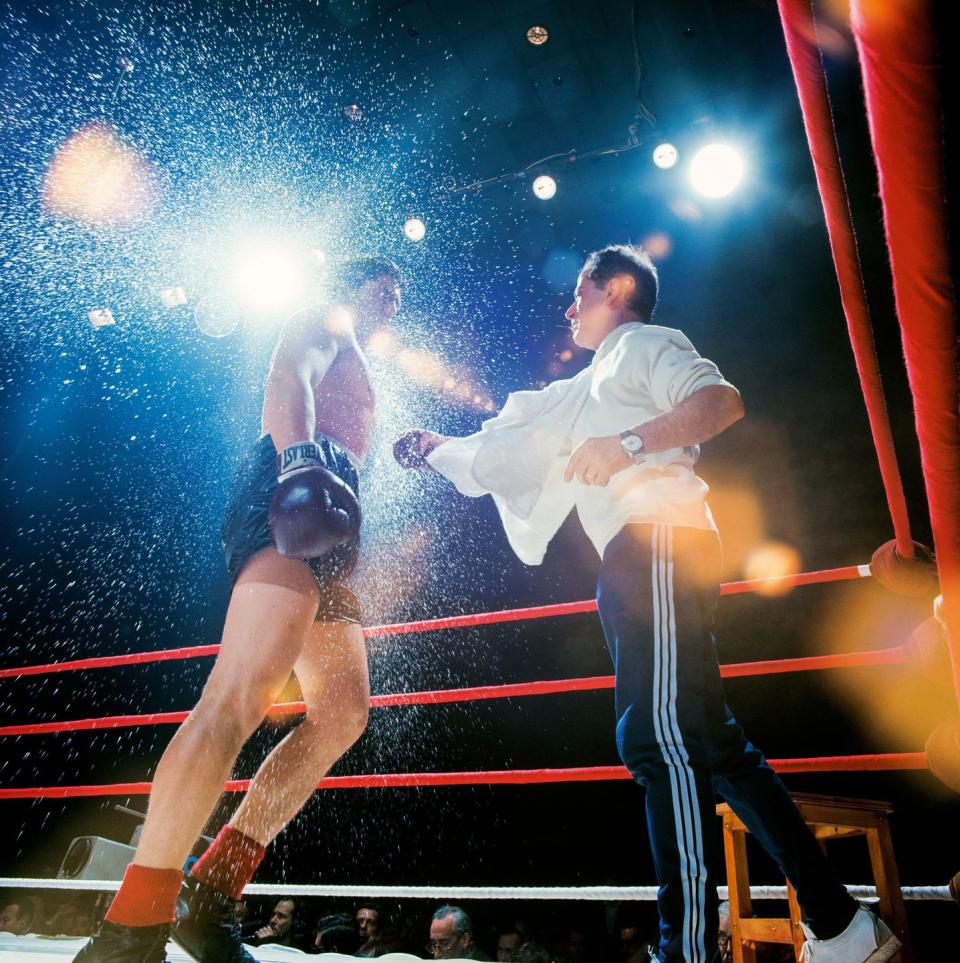
SPLASH: Bonavena vs. Ellis Dec 2, 1967
After Ali was stripped of his title for refusing to serve in the military, the World Boxing Association held a tournament to crown a new heavyweight champ. Argentinian boxer Oscar Bonavena was in the hunt, and Leifer was on hand for his semifinal bout. “Earlier in the fight, I noticed that Bonavena’s corner man tried to cool him down between rounds with a splash of water. I knew what it looked like when you backlit water or sweat coming off a fighter. I knew the light would catch him.”
Is this picture important to Leifer? Not especially. But the rarely seen image speaks to how he approached his work: Over the years, of course, he captured his share of rubber-face headshots and brutal body blows, but as the new book makes clear, Leifer looked beyond the punching for pictures that reveal something deeper—about the fighters, the sport itself, and, sometimes, that place where human emotion lives. Like a shockingly tender shot of “Iron” Mike Tyson cradling his infant son moments after losing to Lennox Lewis, or Ali turning eye contact into a full-contact sport.
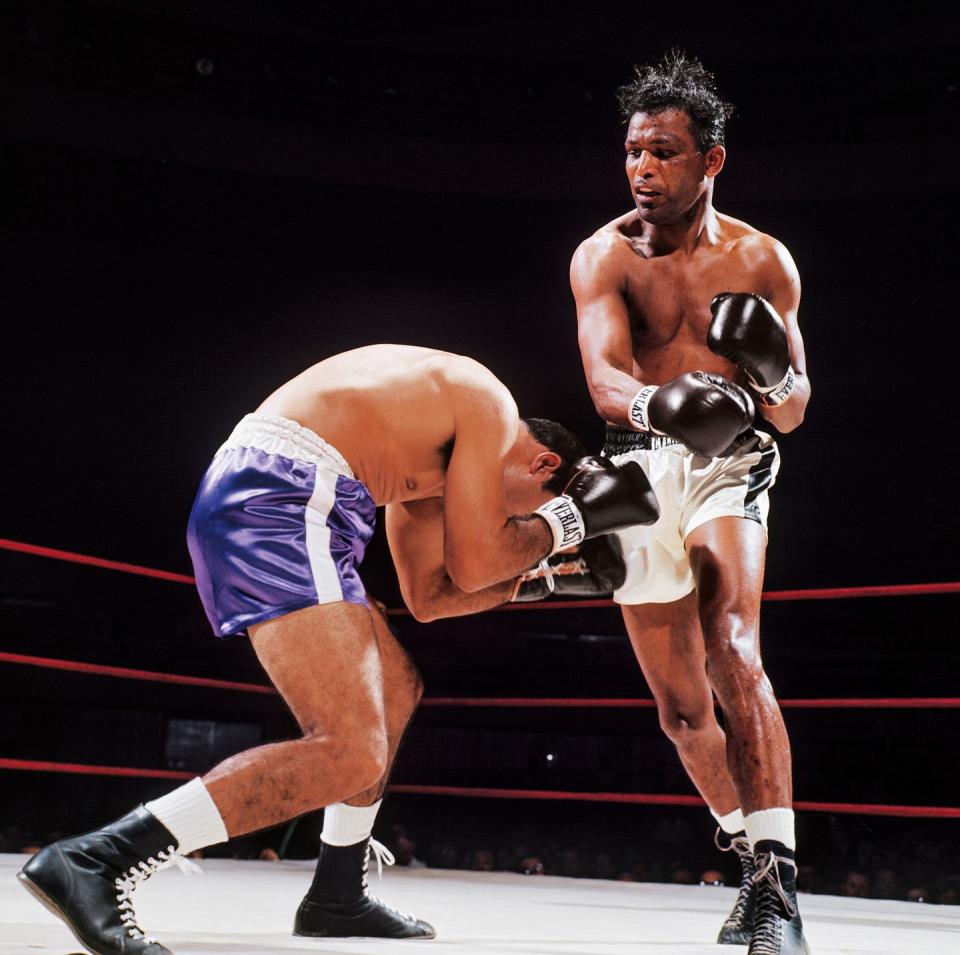
ONCE A CHAMPION: Robinson vs. Harrington, August 10, 1965
“I never dreamed I’d get to photograph Sugar Ray Robinson in action,” says Leifer, “because he should have been retired 10 years before.” But in the last months of his extraordinary 25-year career, the middle-aged Robinson stepped into the ring for a low-profile bout against a young, unranked boxer named Stan Harrington. SI was planning a cover story and sent Leifer. “I would have loved to have photographed Babe Ruth or Lou Gehrig,” he says. “The idea of shooting a legend, even past his prime? Why would I say no?”
Robinson lost the fight in a decision. “I remember it like it was yesterday,” Leifer says. “Harrington wasn’t throwing real punches. He didn’t want to be the guy that left this legendary boxer on the canvas. It was about respect.” The moment may have dripped with melancholy, but Leifer’s picture is pure beauty. It’s also an image that would be impossible to make today now that every inch of the ring—from the rafters to the ropes to the boxers themselves—is busy with branding. In Leifer’s shot, the canvas is white, the background black, the ropes red, and in the middle of it all, two men fighting.
Bill Shapiro is the former Editor-in-Chief of LIFE magazine.
You Might Also Like

